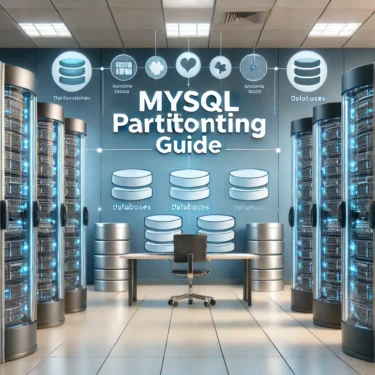目次
- 1 1. What is MySQL partitioning? Overview and benefits
- 2 2. Basics of MySQL Partitioning
- 3 3. Types of Partitioning and How to Apply Them
- 4 4. Partition Management and Maintenance
- 5 5. Partition Pruning and Optimization
- 6 6. Using Partitions and Indexes Together
- 7 7. Partitioning Best Practices
- 8 8. Summary
1. What is MySQL partitioning? Overview and benefits
Introduction
As the size of a database grows, performance optimization becomes crucial. Especially in environments handling large-scale data like MySQL, the partitioning feature is useful. Partitioning is a technique that improves query execution efficiency by dividing a table into multiple partitions. Here, we will take a detailed look at the basic concepts of MySQL partitions and their benefits.2. Basics of MySQL Partitioning
MySQL provides horizontal partitioning, which splits data based on specific rules. For example by using a record’s “creation date” or “ID”, you can divide an entire table into multiple partitions, allowing you to efficiently retrieve only the data you need. This section introduces the basic partitioning settings supported by MySQL and their relationship with storage engines.3. Types of Partitioning and How to Apply Them
RANGE Partitioning
RANGE partitioning splits data based on a specified range (e.g., a date range). For example, withYEAR(created_at) based RANGE partitioning, you can partition data by each specific year.LIST Partitioning
LIST partitioning uses a list of specific values (e.g., data per category) to split data. This method is suitable when classifying data into predefined categories or ranges.HASH Partitioning
HASH partitioning uses a hash function to distribute data. It is typically used to evenly split large volumes of data and is suitable when efficient data access is required.KEY Partitioning
KEY partitioning automatically splits data using MySQL’s internal functions. It is widely used to ensure an even data distribution and remains effective even when multiple complex conditions are involved.4. Partition Management and Maintenance
Adding, dropping, and redistributing partitions play a crucial role in performance management. By usingALTER TABLE, you can flexibly modify the partition layout. However, when you use the DROP PARTITION command, all data within the affected partition is also deleted, so caution is required. When dropping partitions or migrating data, you need to understand the risk of data loss.


